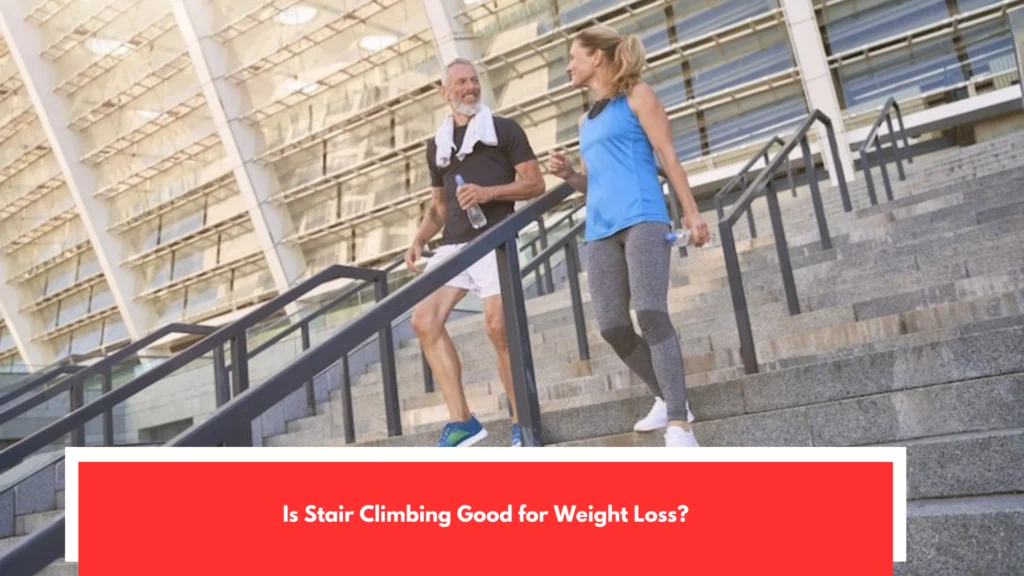You probably remember the famous scene of Rocky Balboa climbing the stairs of the Philadelphia Museum of Art to the beat of Gonna Fly Now, making it seem like he’s flying over them. But climbing stairs isn’t that easy; it’s always difficult, and you often run out of breath. Well, you should know that stair training has great benefits for your long-term health, but also for your performance as a runner. Walking up and down stairs is an aerobic activity that helps you lose weight and strengthen your lower body. Learn how to train for stair climbing to get the best results.
But if you want another reason to start doing it, a study has shown that those who can climb four flights of stairs in 55 seconds without having to stop to rest are 55% less likely to suffer a cardiovascular event, among other diseases. But if that doesn’t seem like enough, another study has shown that just two minutes of stair sprint interval training three times a week can improve cardiovascular health in just six weeks. However, not everyone can do the same routine, as their running level greatly influences their performance.
What Is Stair Climbing?

For this reason, it’s a good idea to adapt your training to your needs and limitations to prevent setbacks. These are the important benefits stair training has for your overall health. But as a runner, it will also help you improve various aspects. First, the muscle strength of your legs. Going up and down stairs will help you tone your lower body and thus ward off those dreaded injuries. That doesn’t mean you have to neglect strength training. However, it’s also true that climbing stairs can be an endurance activity, as propelling your body vertically requires more strength and power.
Another important benefit of stair training is that you’ll see a considerable improvement in your endurance and cardiovascular capacity. Especially if you opt for fartlek or sprint sessions, which also serve to work on plyometrics. Both your aerobic and anaerobic capacity will develop alongside your lactate tolerance, and therefore, you’ll better withstand muscle fatigue while running. Your running technique is another aspect that will be enriched with this type of training, as you’ll work on the extensor and stabilizing function of your glutes during your stride as you go up and down stairs.
Is Stair Climbing Good for Weight Loss?

You should know that this aspect is quite important when running, as if you don’t do it correctly, it can become harmful sooner or later. Any runner can train on stairs, from the most beginner to the most experienced. In fact, it’s recommended to include this type of training in your weekly running plan or combine it with hills. It’s also advisable for trail runners to also opt for climbing and descending stairs, as it will also help them become better runners. The only exception, however, is if you suffer from knee, ankle, or back problems, as these are the main body parts, among others, that are worked.
If you’re a beginner at stair climbing, start by walking or running while taking the stairs two at a time. Sprint from step to step. Jump up and down the last step, 10 times with each leg. Knees up, step by step. If you’re a veteran, sprint up as many stairs as you can. Knees up to the right (sideways). Knees up to the left (sideways). Jump up and down the last step as fast as you can, 10 times with each leg. Rest for a minute between each set and repeat for 10 minutes. When it’s winter and it’s extremely cold, it’s best to take advantage and climb the stairs in your house or apartment building.
Potential Health Benefits of Stair Climbing Workouts

If any neighbors or colleagues give you a strange look, you can tell them that climbing stairs helps improve your health and get on with it. Although we love running, finding the motivation to train day after day isn’t as easy as it seems. As much as we enjoy taking stride after stride, there always comes a time, specific or not, when our motivation wanes, whether due to mental factors or other factors such as fatigue or adverse weather conditions, for example. One of the keys to achieving the necessary consistency and continuing to burn out those running shoes is a variety of stimuli.
A very monotonous workout can be one of the main causes of a lack of motivation since, after all, we know in advance what we’re going to encounter. By now, most of you are probably familiar with the different types of sessions we can do: runs, fartleks, intervals, hills, This training method is not used often, yet it has the ability to improve our running’s endurance, power, and strength. Have you ever attempted using stairs to work out RUNNEA is going to offer more details on this topic next. Firstly, I will tell you what stair training means. As the name shows, it is the practice of going up and down stairs.
Conclusion

Stairs are used as they are found in the training location; their height or length shouldn’t be fixed. It is obvious that climbing a set of tall stairs calls for more physical exertion. Such sessions are different from standard ones, allowing us to have more fun and delight during our fitness routine. Besides, it gives urban dwellers and those far from the mountains a chance to use parallel and opposite slopes, which helps them become better bikers and do more interesting workouts. Using stairs is a way to strengthen your body and, at the same time, improve your mood. I will go over the 5 most important benefits of stair training in the following passages.
Our muscles are challenged differently when we use the stairs instead of running on even ground. Climbing on tiny positive slopes (steps) many times will mostly need your calves, soleus, quadriceps, and glutes to grow stronger. To improve our strength and do better in races with many types of slopes, simply focusing on going down stairs with the opposite exercise, which uses eccentric muscle contractions. No matter if you’re going uphill or downhill, getting better endurance means doing runs at a moderate intensity for a period, helping the fatigue grow gradually, so it doesn’t interrupt your training. Another possibility is to go on a brisk hike instead of a slow one.





